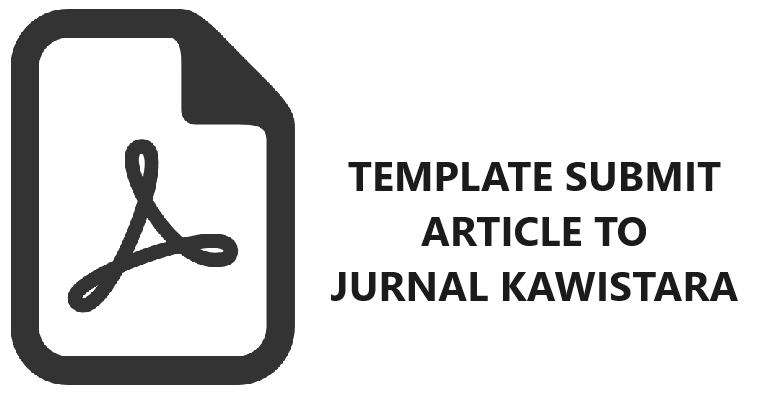TINGKAT KESIAPAN MASYARAKAT PENGELOLAAN LINGKUNGAN DAN KEPARIWISATAAN ALAM PASCA-ERUPSI 2010
Muhamad Muhamad(1*)
(1)
(*) Corresponding Author
Abstract
This study aims to assess and measure the level of community preparedness southern slopes of Merapi eruption after 2010. Readiness level of environmental management and nature based tourism to approach local potential values. The higher the level of community preparedness in managing the environment and natural tourism high semakain the readiness level of the index value.
Keywords
Full Text:
PDFReferences
[ 1. ] Azwar. S. 1997. Reliabilitas dan validitas (Edisi ke 3). Pustaka Pelajar. Yogyakarta.
[ 2. ] Beckman. S. 2004. “Mencari Keseimbangan Pengelolaan Interaksi Antara Masyarakat dan Kawasan Taman Nasional
[ 3. ] Alas Purwo Laporan studi lapangan”. Fakultas Ilmu Sosial Ilmu Politik Universitas Muhammadiyah. Malang. Colinvaux. P. 1986. Ecology. John Wiley dan Sons. New York.
[ 4. ] Cook. R.S. Jr. 1984. Zone for Down Town Urban Design. How Cities Control Development. Lexington Books.
[ 5. ] Cooper. C. Fletcher. J. Gillbert.D dan Stephen W. (1993). Tourism. Principles dan Practice. London. Pitman Publishing.
[ 6. ] Crompton. J.L. 1979. “An Asseesment of the Mexico as a vacation Destination dan The influence of Geographical Location Upon that image” dalam Journal of Travel Research 17(4) hal 32-38.
[ 7. ] Dajan. A. 2000. Pengantar Metode Statistik. Jakarta LP3ES.
[ 8. ] Danrew. H. 2001. Environment dan Tourism. Routledge Introduction to Environment Series. USA.
[ 9. ] Dauglas. RW. 1975. Forest Recreations. Second Edition .Pergamon Press Inc. New York.
[ 10. ] Doxey. J.P. 1975. A Causation Theory of Visitor-Resident Irritants. Metodology. and Research Inverences. The Impact of Tourism. Travel Research & Association.
[ 11. ] Ergun. Goleman and Peter. R. Stopher. 1981. The Effect of Personality on Demand for Recreation Activities. Some Preliminery Findings. London. pergamon Press.
[ 12. ] Goodwin H. 1997. Terestrial Ecotorism. Planning SustainableTourism. Penerbit ITB. Bandung.
[ 13. ] Gunn. C.A. 1994. Tourisme Planning Bassic. Concept. Casees London: Taylor dan Francis Ltd.
[ 14. ] Hall. C.M. dan Page. S.J. 1999. The Geography of Tourism and Recreation Environment. Place dan Space. New York. Routledge.
[ 15. ] Hasanah. N. 2004. “Hubungan Antara Persepsi Dampak Pariwisata Budaya. Tipe Nilai Universal. Tipe Nilai Tradisi. Nilai Tradisi. dan Tipe Nilai Keamanan dengan Sikap Pariwisata Budaya”.
[ 16. ] Tesis (tidak diterbitkan). Jurusan Ilmu-Ilmu Sosial. Program Studi Psikologi Sekolah Pascasarjana. Universitas Gadjah Mada. Yogyakarta.
[ 17. ] Inskeep. E. 1991. Tourism Planning an Intergrated and Sustainable Development Approach, New York: Van Nostrand Reinhold.
[ 18. ] Intosh. Mc. R. dan Geoldner. C.1984. Tourism Principles. Practices. Philosophies. Ohio. Gris Publishing.
[ 19. ] Kadt. D.E. 1979. “Social Planning for Tourism in the Development Countries”. Annuals of Tourism Research 6 (1) pp 36-68. Oxford University Press for World Bank dan Unesco.
[ 20. ] Keraf. A.S.2002. Etika Lingkungan. Penerbit Buku Kompas. Jakarta.
[ 21. ] Klun H. 1998. Promotion of Sustainable Management. du Grey Switzerldan.
[ 22. ] Koentjaraningrat. 1996. Pengantar Antropologi I. Jakarta : Rineka Cipta.
[ 23. ] Kusmayadi dan Sugiarto E. 2000. Metodologi Penelitian dalam Bidang Kepariwisataan. PT Gramedia Pustakan Utama. Jakarta.
[ 24. ] Maryani. E. 2004. “Struktur Keruangan Pariwisata di Kawasan Inti Bandung Raya”. Disertasi. Program Pascasarjana Universitas Gadjah Mada. (tidak diterbitkan) Yogyakarta.
[ 25. ] Masslow. A. H. 1984. Motivation and Personality. Harper and Row. London.
[ 26. ] Mathieson A. and Wall. G. 1982. Tourism. Economic. Physical and Social Impacts. Longman Singapore Ltd. Singapura. Mc Graw Hill Company. Inc. New York. Toronto. London.
[ 27. ] Mill. R.C. dan A. M. Morrison. 1985. The Tourism System. An Introductory Text. Englewood Clifft. New Jersey.
[ 28. ] Muhamad. 2010. Kepariwisataan Berkelanjutan di Wilayah Yogyakarta Utara, Disertasi Magister Kajian Pariwisata, tidak dipublikasikan, Yogyakarta.
[ 29. ] Pearce. D.G. 1998. Tourism Development . John Willey & Sons Inc. New York.
[ 30. ] Pizam A. Newman Y. dan Reichel A. 1979. “Tourism Satisfaction: Uses dan Messages” dalam Analysis of Tourism Research6(2) . hal 196-5.
[ 31. ] Plog. S.C. 1972. Why Destination Areas Rise dan Fall in Popularity. Travel Research Association.
[ 32. ] Pranarka. A.M.W.1987. Epistemologi Dasar Suatu Pengantar. Center for Strategic and International Studies (CSIS), Jakarta.
[ 33. ] Rakhmat. J. 1991. Psikologi Komunikasi. PT Remaja Rosdakarya. Bandung. Rangkuti. F. 2006. Measuring Customer Satisfaction. Gramedia Pustaka Utama. Jakarta.
[ 34. ] Smith. S.J. 1983. Recreation Geography. London.Longman.
[ 35. ] Soemarwoto. O. 1998. Ekologi Lingkungan Hidup dan Pembangunan. Djambatan. Jakarta.
[ 36. ] Veal. A.J. 1992. Research Method for Leisure dan Tourism. Institute of Leisure. Wells. W.D dan Prensky. D. 1996. Consumer Behavior. New York: John Wiley and Sons, Inc.
[ 37. ] Zanden, Z.W.1984. Social Psychology. New York: Random House.
[ 38. ] Ziffer K.A. 1989. Eco-tourism: The Uneasy Alliance.Conservation International.
Article Metrics
Refbacks
- There are currently no refbacks.
Copyright (c) 2015 Jurnal Kawistara
Jurnal Kawistara is published by the Graduate School, Universitas Gadjah Mada.











